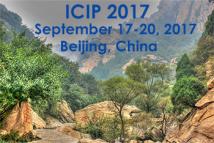
The International Conference on Image Processing (ICIP), sponsored by the IEEE Signal Processing Society, is the premier forum for the presentation of technological advances and research results in the fields of theoretical, experimental, and applied image and video processing. ICIP has been held annually since 1994, brings together leading engineers and scientists in image and video processing from around the world. Visit website.
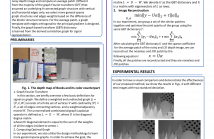
- Read more about SINGLE DEPTH IMAGE SUPER-RESOLUTION AND DENOISING BASED ON SPARSE GRAPHS VIA STRUCTURE TENSOR
- Log in to post comments
The existing single depth image super-resolution (SR)
methods suppose that the image to be interpolated is noise
free. However, the supposition is invalid in practice because
noise will be inevitably introduced in the depth image acquisition
process. In this paper, we address the problem of image
denoising and SR jointly based on designing sparse graphs
that are useful for describing the geometric structures of data
domains. In our method, we first cluster similar patches in a
noisy depth image and compute an average patch. Different
- Categories:
 12 Views
12 Views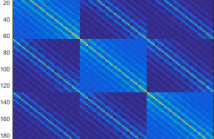
- Read more about Generating Adaptive and Robust Filter Sets using an Unsupervised Learning Framework
- Log in to post comments
In this paper, we introduce an adaptive unsupervised learning framework, which utilizes natural images to train filter sets. The ap- plicability of these filter sets is demonstrated by evaluating their per- formance in two contrasting applications - image quality assessment and texture retrieval. While assessing image quality, the filters need to capture perceptual differences based on dissimilarities between a reference image and its distorted version. In texture retrieval, the filters need to assess similarity between texture images to retrieve closest matching textures.
- Categories:
 12 Views
12 Views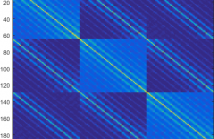
- Read more about Generating Adaptive and Robust Filter Sets using an Unsupervised Learning Framework
- Log in to post comments
In this paper, we introduce an adaptive unsupervised learning framework, which utilizes natural images to train filter sets. The ap- plicability of these filter sets is demonstrated by evaluating their per- formance in two contrasting applications - image quality assessment and texture retrieval. While assessing image quality, the filters need to capture perceptual differences based on dissimilarities between a reference image and its distorted version. In texture retrieval, the filters need to assess similarity between texture images to retrieve closest matching textures.
- Categories:
 5 Views
5 Views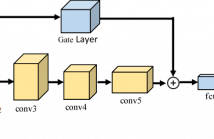
- Read more about Gate connected Convolutional Neural Network for Object Tracking
- Log in to post comments
Convolutional neural networks (CNNs) have been employed in visual tracking due to their rich levels of feature representation. While the learning capability of a CNN increases with its depth, unfortunately spatial information is diluted in deeper layers which hinders its important ability to localise targets. To successfully manage this trade-off, we propose a novel residual network based gating CNN architecture for object tracking. Our deep model connects the front and bottom convolutional features with a gate layer.
- Categories:
 18 Views
18 Views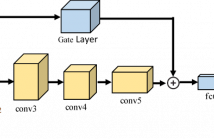
- Read more about Gate connected Convolutional Neural Network for Object Tracking
- Log in to post comments
Convolutional neural networks (CNNs) have been employed in visual tracking due to their rich levels of feature representation. While the learning capability of a CNN increases with its depth, unfortunately spatial information is diluted in deeper layers which hinders its important ability to localise targets. To successfully manage this trade-off, we propose a novel residual network based gating CNN architecture for object tracking. Our deep model connects the front and bottom convolutional features with a gate layer.
poster_ICIP.pdf
- Categories:
 8 Views
8 Views- Read more about Interactive Fault Extraction in 3D Seismic Data Using the Hough Transform and Tracking Vectors
- Log in to post comments
The exploration of reservoir regions has a close relationship with the localization of faults. Although faults can be labeled in seismic volumes by experienced interpreters, such manual interpretation is inefficient when dealing with a dramatically growing amount of collected seismic data. To speed up the interpretation efficiency of faults, in this paper, we propose a method that semi-automatically detects fault surfaces using the Hough transform as well as tracking vectors.
- Categories:
 59 Views
59 Views- Read more about A Two-Stage Minimum Spanning Tree (MST) based Clustering Algorithm for 2D Deformable Registration of Time Sequenced Images
- Log in to post comments
Significant cardiac and respiratory motion of the living subject, occasional spells of defocus, drifts in the field of view,
and long image sequences make the registration of in-vivo microscopy image sequences used in atherosclerosis study an
onerous task. In this study we developed and implemented a novel Minimum Spanning Tree (MST)-based clustering
method for image sequence registration that first constructs a minimum spanning tree for the input image sequence. The
- Categories:
 21 Views
21 Views- Read more about CONVOLUTIONAL NEURAL NETWORKS FOR LICENSE PLATE DETECTION IN IMAGES
- Log in to post comments
License plate detection is a challenging task when dealing with open environments and images captured from a certain distance by lowcost cameras. In this paper, we propose an approach for detecting license plates based on a convolutional neural network which models a function that produces a score for each image sub-region, allowing us to estimate the locations of the detected license plates by combining the results obtained from sparse overlapping regions.
- Categories:
 75 Views
75 Views- Read more about Mass Segmentation in Mammograms: a Cross-Sensor comparison of deep and tailored features
- Log in to post comments
Through the years, several CAD systems have been developed to help radiologists in the hard task of detecting signs
of cancer in mammograms. In these CAD systems, mass segmentation plays a central role in the decision process. In the
literature, mass segmentation has been typically evaluated in a intra-sensor scenario, where the methodology is designed and
evaluated in similar data. However, in practice, acquisition systems and PACS from multiple vendors abound and current
- Categories:
 13 Views
13 Views- Read more about Automated 3D Muscle Segmentation From MRI Data Using Convolutional Neural Network
- Log in to post comments
- Categories:
 1 Views
1 Views